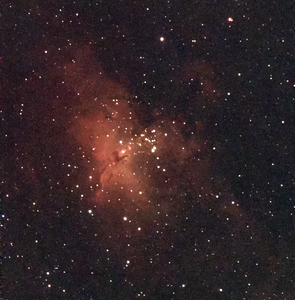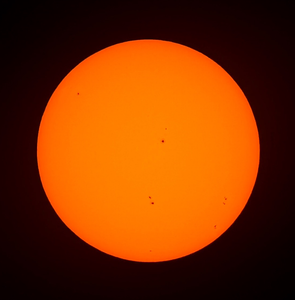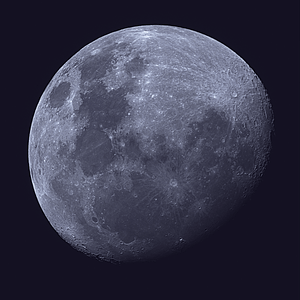ZWO Seestar S50 Smart Telescope – Portable All-in-One Astrophotography & EAA
Free adjuster with every order of the S50
The ZWO Seestar S50 is a complete smart telescope in one compact unit. With a 50 mm f/5 apochromatic triplet lens, built-in Sony IMX462 colour camera, motorised GoTo mount and fully guided smartphone app, it removes the usual astrophotography complexity. Set it on the tripod, tap a target in the app and watch as Seestar S50 slews, focuses, tracks and live-stacks the image on your screen – ideal for beginners, outreach and grab-and-go observers who still want serious results.
Perfect for deep-sky astrophotography, electronically assisted astronomy (EAA), lunar imaging, solar (with included filter) and casual wide-field observing from light-polluted gardens or dark-sky sites.



Key Seestar S50 Benefits at a Glance
- All-in-one design: integrated optics, camera, mount, dew heater and filters – no extra astro-camera or computer required.
- Tap-to-GoTo & auto-tracking: choose an object in the app and Seestar S50 finds, centres and tracks it automatically.
- Live stacking & EAA: watch detail, colour and signal-to-noise improve in real time as frames accumulate.
- Smartphone control (iOS & Android): Wi-Fi/Bluetooth connection with guided workflow, autofocus and plate solving.
- Portable power: internal battery for around 6 hours, extendable via USB-C power bank or portable power station.
- Solar, lunar & deep-sky ready out of the box: tripod, white-light solar filter, Bahtinov mask and charging cable included.
Fast UK dispatch from Dark Clear Skies – independent specialist ZWO dealer.
What Can the ZWO Seestar S50 Capture?
The Seestar S50 is optimised for wide-field astrophotography and electronically assisted observing. From a typical suburban (Bortle 5–6) garden you can expect:
- Showpiece nebulae & galaxies – Orion, Lagoon, Eagle, Dumbbell, Andromeda, Whirlpool and many more with live stacking in the app.
- The Moon – crisp close-ups of craters, maria and terminator detail ideal for sharing with family or social media.
- Bright planets – snapshots of Jupiter, Saturn and Venus; great for outreach and casual views.
- Star clusters & wide-field targets – Pleiades, Double Cluster, open clusters and rich Milky Way fields.
- Solar imaging (safely) – the included white-light filter lets you view and photograph sunspots. Always use the supplied solar filter for any solar observing.





Setup & App – From Box to First Image in Minutes
Seestar S50 is designed so that a complete beginner can be capturing deep-sky images within their first night:
- Place the Seestar on its compact tripod (or any sturdy photo tripod with 3/8" thread) and power it on.
- Connect your phone or tablet to the Seestar Wi-Fi / Bluetooth network and open the free app.
- Follow the guided setup: location, time, focus (using the included Bahtinov mask) and quick sky alignment.
- Choose a target from the built-in catalogue or sky map. Tap GoTo – Seestar slews, plate-solves and centres it automatically.
- Start imaging. The app handles exposure, gain and live stacking, while you watch the image improve frame-by-frame.
Autofocus, plate solving and in-app firmware updates keep performance sharp and features current with minimal user effort.

![]()

Optics, Sensor & Image Processing
Inside the Seestar S50 you get a carefully matched optical and imaging system tuned for fast, wide-field astrophotography:
- Optics: 50 mm f/5 apochromatic triplet refractor for sharp, colour-corrected stars.
- Focal length: 250 mm – wide enough for large nebulae and galaxies, with enough reach for lunar close-ups.
- Sensor: Sony IMX462 1/2.8" colour CMOS, 2.9 µm pixels, ~2.1 MP.
- Built-in filters: dual-band nebular filter for light-polluted emission targets plus internal dark-frame calibration module.
- Image enhancement: live stacking, noise reduction and optional contrast/colour tweaks directly in the app.





Power, Battery Life & Portability
Weighing only around 2.5 kg, the Seestar S50 is lighter than many DSLR + mount combinations, yet it includes the telescope, camera and tracking in one unit.
- Battery life: typically up to ~6 hours on a full charge (conditions and temperature dependent).
- Charging & external power: USB-C charging; extend runtime easily with a USB-C power bank or compact power station.
- Low-power electronics: efficient design for long sessions without bulky batteries.



Filters, Tripods & Recommended Accessories
Out of the box, Seestar S50 includes a white-light solar filter, dual-band internal filter and Bahtinov mask. To get the best from your setup we recommend:
- Nebula & light-pollution filters: enhance emission nebulae further with compatible dual-band or UHC filters – see our dedicated Seestar S50 accessories bundle.
- Mount stability: upgrade to the ZWO TH10 fluid head & sturdy tripod for smoother motion and better vibration control.
- Power options: extend sessions with a reliable portable power supply or USB-C power bank.
- Cases & protection: padded or rigid cases keep the Seestar safe for travel and outreach events.
Real-World Results from UK Skies
The image below was captured by Darren Cotton in Stoke, Staffordshire (approx. Bortle 5 skies) using a Seestar S50. It shows what is achievable from a typical UK garden with minimal setup time.

Seestar S50 vs Seestar S30 vs DWARF 3
If you are deciding between the current generation of smart telescopes, this quick comparison helps highlight where the Seestar S50 sits.
| Model | Best For | Aperture / Optics | Key Strength |
|---|---|---|---|
| Seestar S50 | Beginner–intermediate EAA & imaging | 50 mm f/5 triplet, 250 mm focal length | Best balance of portability, light-gathering and image detail |
| Seestar S30 | Ultra-portable casual viewing | 30 mm aperture, shorter focal length | Lightest grab-and-go Seestar for wide-field sweeps |
| DWARF 3 | Alternative smart scope platform | Different optical train & feature set | Flexible app ecosystem and additional shooting modes |
Compared with the S30, the Seestar S50 gathers more light and offers a longer 250 mm focal length, giving cleaner stacked images and tighter framing on many nebulae and galaxies while remaining highly portable.





Technical Specifications – ZWO Seestar S50
- Aperture: 50 mm (1.97")
- Focal length: 250 mm
- F-ratio: f/5 (fast, wide-field imaging)
- Optical design: apochromatic triplet refractor
- Mount type: computerised alt-azimuth with GoTo & auto-tracking
- Sensor: Sony IMX462 colour CMOS, 1920 × 1080, 2.9 µm pixels
- Filters: built-in dual-band nebular filter and internal dark-frame filter module
- Dew control: integrated dew heater
- Connectivity: Wi-Fi & Bluetooth, app control for iOS & Android
- Internal storage: 64 GB
- Power: built-in rechargeable battery, USB-C charging
- Typical battery life: up to ~6 hours (extendable via USB-C power bank)
- Operating temperature: 0 °C to 40 °C
- Weight: approx. 2.5 kg (including mount)
- Included in box: Seestar S50 telescope, tripod, white-light solar filter, Bahtinov focusing mask, dust caps, charging cable and documentation.
Equatorial Mode Support
Pair the Seestar S50 with the optional ZWO TH10 mount and suitable wedge to unlock an equatorial-style tracking mode. This allows longer sub-exposures with reduced field rotation, beneficial for advanced users pushing the S50 to its limits on faint targets.

Seestar S50 – Frequently Asked Questions
Is the Seestar S50 suitable for complete beginners?
Yes. The Seestar S50 is one of the most beginner-friendly smart telescopes available. App-guided setup, automatic GoTo, autofocus and plate solving mean you do not need previous experience with polar alignment, star hopping or camera settings to get impressive results.
What can I realistically see and photograph from a light-polluted garden?
From a typical Bortle 5–6 UK garden you can capture the Moon, bright planets, open clusters, globular clusters and many popular nebulae and galaxies. Live stacking dramatically improves contrast and reduces noise, revealing faint detail that is invisible in a single short exposure.
Do I need a separate astro camera, laptop or mount?
No. The Seestar S50 integrates the telescope, motorised GoTo mount, cooled-style camera, dew control and filter system into one compact unit controlled entirely from your phone or tablet.
Can the Seestar S50 observe the Sun safely?
Yes – as long as you use the supplied white-light solar filter and ensure it is fitted securely before pointing at the Sun. Never look at the Sun without the filter in place. The Seestar shows sunspots and disk detail in white light.
How long does the battery last and how can I extend it?
Under typical conditions you can expect around six hours on a full charge. For longer sessions or cold nights, power the Seestar from a USB-C power bank or portable power station while you observe.
Does the Seestar S50 work with both iOS and Android devices?
Yes. The free Seestar app is available for both iOS and Android. You connect via Wi-Fi or Bluetooth, then control every aspect of the telescope, including GoTo, focus, exposure, stacking and image downloads.
Can I process Seestar images on my computer later?
Yes. The app lets you export images for further processing in software such as PixInsight, Photoshop or Affinity Photo. Many users share straight-from-the-app results and also keep the stacked data for more advanced post-processing.
What tripod should I use if I want extra stability?
The supplied tripod is fine for casual use. For heavier use or windy nights, we recommend a robust photo or video tripod with a 3/8" thread – for example paired with the ZWO TH10 fluid head available from Dark Clear Skies.
What support do I get when buying from Dark Clear Skies?
As an independent UK astronomy retailer, Dark Clear Skies offers personal advice before and after purchase, help with setup and configuration, and warranty support should you ever need it.





